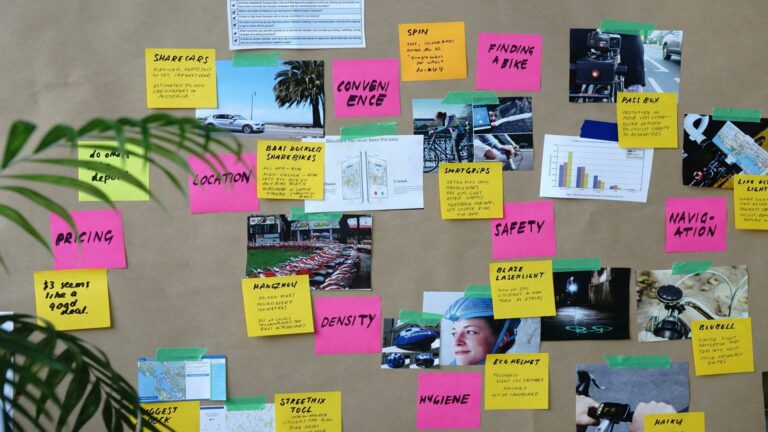On-Page SEO Best Practices: The Ultimate Guide to Boosting Your Rankings in 2024
Mastering On-Page SEO Best Practices in 2024
In the ever-evolving world of digital marketing, staying ahead of the curve with on-page SEO best practices is crucial for any business looking to thrive online. At Web Design London, we understand the importance of implementing cutting-edge SEO strategies to help our clients achieve top rankings and drive organic traffic. Let’s explore the most effective on-page SEO best practices that will propel your website to new heights in 2024.
1. Optimize Your Content for Mobile-First Indexing
With Google’s mobile-first indexing approach, it’s essential to prioritize mobile optimization for your website. Ensure your site is responsive, loads quickly on mobile devices, and provides an excellent user experience across all screen sizes. Page load speed is particularly crucial for mobile users, so optimize images, minify CSS and JavaScript, and leverage browser caching to improve performance.
2. Create High-Quality, Engaging Content
Content remains king in the world of SEO. Focus on creating comprehensive, valuable content that addresses your audience’s needs and questions. Incorporate relevant keywords naturally throughout your content, including in headings, subheadings, and the first 100 words of your text. Use a mix of short and long-form content to cater to different user intents and search queries.
3. Optimize Title Tags and Meta Descriptions
Craft compelling title tags and meta descriptions that accurately reflect your content and include your target keywords. Keep title tags under 60 characters and meta descriptions under 160 characters to ensure they display properly in search results. Use action-oriented language to encourage click-throughs from the search engine results page (SERP).
4. Implement Schema Markup
Schema markup helps search engines better understand your content and can lead to rich snippets in search results. Implement relevant schema types for your business, such as local business, product, or review schema, to enhance your visibility in the SERPs and potentially improve click-through rates.
5. Optimize Internal Linking Structure
A well-planned internal linking structure helps distribute link equity throughout your site and guides users to relevant content. Use descriptive anchor text for internal links and ensure that your most important pages are easily accessible within a few clicks from your homepage.
By implementing these on-page SEO best practices, you’ll be well on your way to improving your website’s visibility and driving more organic traffic. At Web Design London, we specialize in small business website optimization and can help boost your online presence and improve your local search rankings. Stay ahead of the competition by continually refining your on-page SEO strategies and adapting to the latest search engine algorithms.
1. Optimize Your Title Tags and Meta Descriptions
Crafting Compelling Title Tags and Meta Descriptions: Essential On-Page SEO Best Practices
One of the cornerstones of on-page SEO best practices is the art of crafting compelling title tags and meta descriptions. These elements are crucial not only for improving your search engine rankings but also for attracting potential visitors to click through to your website.
Title Tags: Your First Impression in Search Results
Title tags serve as the headline for your page in search engine results pages (SERPs). To optimize your title tags:
- Keep them concise, ideally under 60 characters
- Include your primary keyword near the beginning
- Make them unique for each page
- Accurately represent your page content
- Include your brand name when possible
By following these guidelines, you can create title tags that are both search engine friendly and compelling to users.
Meta Descriptions: Your Sales Pitch in SERPs
Meta descriptions act as a brief summary of your page content, appearing below the title tag in search results. To craft effective meta descriptions:
- Keep them between 150-160 characters
- Include your primary keyword naturally
- Write a clear, concise summary of the page content
- Include a call-to-action to encourage clicks
- Make them unique for each page
Well-written meta descriptions can significantly improve your click-through rates from search results, driving more targeted traffic to your site.
By implementing these on-page SEO techniques, you can enhance both your visibility in search engines and your ability to attract clicks from potential visitors. Remember, the goal is to create title tags and meta descriptions that not only rank well but also accurately represent your content and entice users to visit your site.
2. Create High-Quality, Relevant Content
Mastering On-Page SEO Best Practices
Content remains the undisputed king in the realm of SEO, and creating high-quality, relevant content is one of the most crucial on-page SEO best practices. Search engines prioritize content that provides value to users and addresses their search intent. To enhance your website’s performance, consider implementing the following strategies:
- Keyword Optimization: Conduct thorough keyword research and strategically incorporate relevant keywords into your content, titles, headings, and meta descriptions. Proper keyword usage helps search engines understand your content’s topic and relevance.
- Content Structure: Organize your content with clear headings (H1, H2, H3) and use short paragraphs to improve readability. This structure not only helps users navigate your content but also assists search engines in understanding its hierarchy.
- Meta Tags: Craft compelling meta titles and descriptions that accurately summarize your content and entice users to click through from search results.
- Internal Linking: Implement a strategic internal linking structure to help users and search engines navigate your site, distributing link equity and highlighting important pages.
- Mobile Optimization: Ensure your website has a responsive design that provides an excellent user experience across all devices, as mobile-first indexing is now a crucial factor in search rankings.
- Page Speed: Optimize your website’s loading speed by compressing images, leveraging browser caching, and minimizing code. Fast-loading pages improve user experience and are favored by search engines.
By implementing these on-page SEO best practices, you can significantly improve your website’s visibility in search results, attract more organic traffic, and provide a better experience for your users. Remember that SEO is an ongoing process, so regularly review and update your content to maintain its relevance and effectiveness.
3. Optimize Your URL Structure
Mastering URL Optimization: A Key On-Page SEO Best Practice
An often overlooked yet crucial aspect of on-page SEO best practices is URL optimization. A well-structured URL can significantly improve your search engine rankings and provide users with a clear idea of your page’s content. When crafting URLs, it’s essential to keep them concise, descriptive, and relevant to the page’s topic.
To optimize your URLs effectively:
- Use keywords strategically, placing them close to the beginning of the URL
- Keep URLs short and easy to read, avoiding unnecessary words or characters
- Use hyphens to separate words instead of underscores or spaces
- Avoid using dynamic parameters when possible
- Implement a logical hierarchy that reflects your site structure
A clean URL structure is particularly important for local SEO strategies, helping your business stand out in specific geographic areas. Moreover, it enhances user experience by making navigation more intuitive and improving overall on-page SEO performance.
Remember, well-optimized URLs contribute to a stronger overall SEO strategy by:
- Improving crawlability for search engines
- Increasing click-through rates in search results
- Enhancing the user experience and site navigation
- Providing additional context for both users and search engines
By implementing these URL optimization techniques, you’ll not only be adhering to on-page SEO best practices but also boosting your online presence and setting a strong foundation for your website’s overall search performance.
4. Implement Schema Markup
Leveraging Schema Markup for Effective On-Page SEO
Schema markup is a powerful tool in your on-page SEO best practices arsenal. It helps search engines understand the context of your content, potentially leading to rich snippets in search results. Implementing schema markup is a crucial aspect of a comprehensive website optimization strategy that can significantly boost your online presence.
When properly implemented, schema markup can:
- Enhance your website’s visibility in search engine results pages (SERPs)
- Provide more informative search results for users
- Increase click-through rates (CTR) from search results
- Improve the overall user experience by offering more relevant information
To maximize the benefits of schema markup, it’s essential to combine it with other on-page SEO techniques. These may include:
- Optimizing meta titles and descriptions
- Creating high-quality, relevant content
- Improving site structure and internal linking
- Enhancing page load speed and mobile responsiveness
By integrating schema markup with these on-page optimization strategies, you can create a powerful synergy that drives more targeted traffic to your website and improves your overall search engine rankings.
Remember, while schema markup is not a direct ranking factor, it plays a crucial role in helping search engines understand your content better. This improved understanding can lead to more accurate indexing and potentially better positioning in search results for relevant queries.
5. Optimize Images for SEO
Optimizing Visual Content for On-Page SEO
Visual content plays a crucial role in user engagement and is an essential component of on-page SEO best practices. To maximize the impact of your visual elements, consider the following strategies:
- Image Optimization: Compress images without sacrificing quality to improve page load speed, a critical factor in on-page SEO. Use descriptive file names and alt text that include relevant keywords to help search engines understand your images.
- Responsive Design: Implement responsive web design to ensure your visual elements adapt seamlessly across different devices. This enhances user experience and can potentially boost your search rankings, as mobile-first indexing is now a priority for search engines.
- Infographics and Videos: Incorporate engaging infographics and videos to increase time on page and reduce bounce rates. These visual elements can also attract backlinks, further improving your SEO performance.
- Lazy Loading: Implement lazy loading for images and videos to improve initial page load times, especially for users on slower connections or mobile devices.
Additionally, incorporating local business website design principles can further improve your site’s visibility and appeal to your target audience. This includes using location-specific images and ensuring your visual content reflects the local culture and preferences of your target market.
By optimizing your visual content according to these on-page SEO best practices, you can create a more engaging user experience, improve your site’s performance in search results, and ultimately drive more qualified traffic to your website.
6. Improve Page Load Speed
Optimizing Page Speed: A Crucial On-Page SEO Best Practice
Page speed is a critical ranking factor and an essential aspect of user experience. Implementing speed optimization techniques is one of the most important on-page SEO best practices. To enhance your website’s performance, consider the following strategies:
- Mobile-First Approach: Prioritize mobile-friendly website development, which not only improves loading times but also caters to the growing number of mobile users. This approach aligns with Google’s mobile-first indexing, ensuring your site performs well across all devices.
- Optimize Images: Compress and resize images without sacrificing quality to reduce page load times. Implement lazy loading for images that appear below the fold to improve initial page load speed.
- Minimize HTTP Requests: Reduce the number of elements on your page that require separate HTTP requests. This can include combining CSS and JavaScript files, using CSS sprites for images, and leveraging browser caching.
- Leverage Browser Caching: Set up browser caching to store static files locally in users’ browsers, reducing load times for returning visitors.
- Content Delivery Network (CDN): Utilize a CDN to distribute your content across multiple, geographically diverse servers. This reduces the distance between the user and your website’s server, decreasing load times.
Additionally, focusing on local search optimization can significantly boost your site’s visibility and user engagement, particularly for businesses targeting specific areas like Chelsea or Kensington. By implementing these speed optimization techniques and on-page SEO best practices, you’ll improve your website’s performance, user experience, and search engine rankings.
7. Implement Internal Linking
Mastering On-Page SEO Best Practices
A robust internal linking structure is a cornerstone of on-page SEO best practices. It helps distribute page authority throughout your site and guides users to relevant content. Implementing effective internal linking not only enhances user experience but also improves your website’s crawlability and indexability by search engines.
To optimize your on-page SEO, consider the following key strategies:
- Content Optimization: Create high-quality, relevant content that addresses user intent and incorporates target keywords naturally. Optimize your title tags, meta descriptions, and header tags to improve click-through rates and search engine rankings.
- URL Structure: Use clean, descriptive URLs that include relevant keywords and accurately reflect the page’s content. Well-structured URLs can improve both user experience and search engine understanding of your content.
- Image Optimization: Compress images for faster loading times and use descriptive alt text to improve accessibility and provide context for search engines.
- Mobile-First Approach: With Google’s mobile-first indexing, ensuring your website is fully responsive and optimized for mobile devices is crucial for SEO success.
- Page Speed: Improve your website’s loading speed by optimizing code, leveraging browser caching, and minimizing server response times. Fast-loading pages contribute to better user experience and can positively impact search rankings.
By focusing on these on-page SEO best practices, you can significantly enhance your website’s visibility in search engine results pages (SERPs) and improve overall user engagement. Remember, on-page SEO is an ongoing process that requires regular monitoring and adjustments to stay ahead in the competitive digital landscape.
8. Optimize for Mobile
Mobile-First Optimization: A Crucial On-Page SEO Best Practice
In today’s digital landscape, mobile-first optimization has become a cornerstone of effective on-page SEO best practices. With Google’s shift to mobile-first indexing, ensuring your website is fully optimized for mobile devices is no longer optional—it’s essential for maintaining and improving your search engine rankings.
Mobile-first optimization goes beyond mere responsiveness. It encompasses a holistic approach to website design and functionality that prioritizes the mobile user experience. This includes:
- Fast loading times on mobile devices
- Easy-to-read content without zooming
- Touch-friendly navigation and buttons
- Optimized images and media for mobile viewing
- Simplified forms and conversion processes
Implementing these mobile-first strategies not only improves user experience but also significantly enhances your site’s visibility in search engine results. Search engines, particularly Google, now predominantly use the mobile version of your site for indexing and ranking. This means that a well-optimized mobile site can lead to better rankings across all devices.
Moreover, mobile-first indexing aligns perfectly with current user behavior trends. With an increasing number of searches performed on mobile devices, catering to this audience is crucial for capturing organic traffic and improving engagement metrics.
To fully leverage mobile-first optimization, consider the following advanced techniques:
- Implement Accelerated Mobile Pages (AMP) for lightning-fast loading
- Use structured data to enhance mobile search results
- Optimize for voice search, which is predominantly used on mobile devices
- Ensure seamless integration of multimedia content on mobile platforms
By prioritizing mobile-first optimization in your on-page SEO strategy, you’re not just improving your search rankings—you’re providing a superior user experience that can lead to increased engagement, lower bounce rates, and higher conversion rates. In the competitive digital marketplace, this mobile-centric approach can give you a significant edge over competitors who haven’t fully embraced mobile optimization.
9. Utilize Header Tags Effectively
Mastering Header Tags: A Crucial On-Page SEO Best Practice
The proper use of header tags (H1, H2, H3, etc.) is a fundamental on-page SEO best practice that can significantly enhance your website’s search engine performance and user experience. By implementing a clear and logical hierarchy with header tags, you not only improve the readability and scannability of your content for users but also provide search engines with valuable context about the structure and organization of your page.
Benefits of Proper Header Tag Usage
- Improved Content Structure: Header tags create a clear outline of your content, making it easier for both users and search engines to understand the hierarchy of information.
- Enhanced User Experience: Well-structured content with proper headers allows visitors to quickly scan and find the information they’re looking for, reducing bounce rates and increasing engagement.
- Better Search Engine Visibility: Search engines use header tags to understand the main topics and subtopics of a page, which can positively impact your rankings for relevant keywords.
- Accessibility: Header tags help screen readers navigate content more effectively, making your site more accessible to users with disabilities.
When combined with other effective on-page SEO strategies, proper header usage can significantly boost your website’s visibility and help attract more targeted traffic. It’s particularly important for local online marketing efforts, as it can impact how well your content ranks in local search results.
Best Practices for Header Tag Optimization
- Use Only One H1 Tag: The H1 tag should be used for your main page title and include your primary keyword.
- Maintain a Logical Hierarchy: Use H2 tags for main sections, H3 for subsections, and so on. This creates a clear content structure.
- Include Keywords Naturally: Incorporate relevant keywords in your headers, but avoid keyword stuffing.
- Keep Headers Concise: Aim for clear, descriptive headers that accurately summarize the content that follows.
- Ensure Consistency: Maintain a consistent header structure across your website for better user experience and SEO.
By implementing these on-page SEO techniques and paying close attention to your header tag structure, you can create a more user-friendly and search engine-optimized website. This approach not only improves your chances of ranking higher in search results but also enhances the overall user experience, leading to increased engagement and conversions.
10. Leverage Social Signals
On-Page SEO Best Practices: Leveraging Social Signals and Expert Techniques
While not a direct ranking factor, social signals play a crucial role in on-page SEO best practices and can indirectly impact your SEO performance. Implementing these practices effectively often requires expertise in WordPress web development and a deep understanding of expert SEO services.
By integrating social elements into your website design and content strategy, you can enhance user engagement and potentially improve your search rankings. This is particularly important for local SEO strategies, where social proof and community engagement can significantly boost visibility.
To maximize the impact of social signals on your SEO efforts:
- Optimize your content for shareability by creating high-quality, engaging posts that resonate with your audience
- Integrate social sharing buttons prominently on your website to encourage visitors to spread your content
- Actively engage with your followers on social media platforms to build a strong online community
- Use social media to promote your latest blog posts, products, or services, driving traffic back to your website
Remember, while social signals themselves may not directly influence rankings, the increased visibility and traffic they generate can lead to more backlinks, longer on-site engagement, and other factors that do impact your SEO performance. By combining these social strategies with other on-page SEO techniques, you can create a powerful synergy that boosts your overall online presence and search engine rankings.
Conclusion: Implementing On-Page SEO Best Practices with Web Design London
Mastering On-Page SEO Best Practices
Implementing on-page SEO best practices is crucial for achieving and maintaining high search engine rankings. By optimizing your website’s content and structure, you can significantly improve its visibility, user experience, and overall performance in search results.
Key Elements of On-Page SEO
- Title Tags: Craft compelling, keyword-rich titles for each page.
- Meta Descriptions: Write concise, informative summaries that entice clicks.
- Header Tags: Use H1, H2, and H3 tags to structure content hierarchically.
- Content Quality: Create high-quality, relevant content that addresses user intent.
- Internal Linking: Connect related pages to improve site structure and user navigation.
- Image Optimization: Use descriptive file names and alt text for images.
- URL Structure: Create clean, readable URLs that include target keywords.
Advanced On-Page SEO Techniques
To stay ahead in the competitive digital landscape, consider implementing these advanced strategies:
- Schema Markup: Implement structured data to help search engines understand your content better.
- Mobile Optimization: Ensure your website is fully responsive and optimized for mobile-first indexing.
- Page Speed Optimization: Improve loading times to enhance user experience and search rankings.
- User Experience (UX): Focus on creating an intuitive, easy-to-navigate website design.
- Content Freshness: Regularly update and improve your content to maintain relevance.
By implementing these on-page SEO best practices, you can create a solid foundation for your website’s search engine performance. Remember that SEO is an ongoing process, and staying up-to-date with the latest trends and algorithm changes is essential for long-term success.
At Web Design London, we specialize in providing comprehensive SEO services that encompass all aspects of on-page optimization. Our team of experts stays current with the latest SEO trends to ensure your website remains competitive in the ever-changing digital landscape.
Ready to take your website’s SEO to the next level? Contact Web Design London today for a free consultation and discover how our tailored SEO solutions can help your business thrive online.













